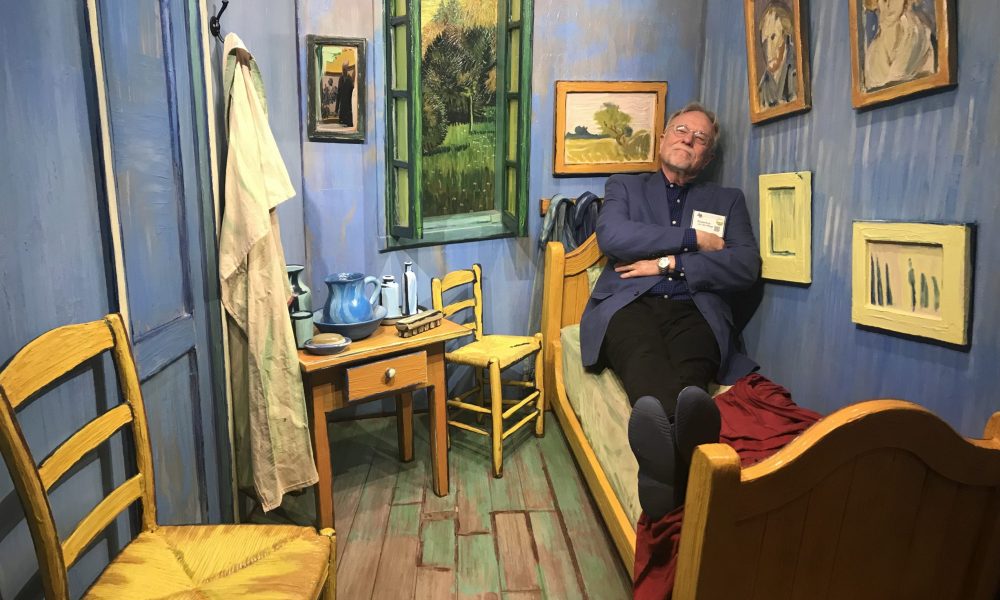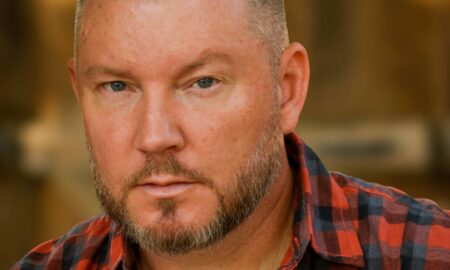

Today we’d like to introduce you to Robertus van der Wege.
Robertus, let’s start with your story. We’d love to hear how you got started and how the journey has been so far.
For most of my adult life, I have been a career arts administrator, art educator and artist. I have administered an arts program for the Hawaii State Prison system, worked as the Curator of Extension Services for the Honolulu Academy of Arts, served two terms as president of the Hawaii Museums Association, was the Art and Culture Coordinator for the University of Hawaii at Hilo, and was the Assistant Director at the University of Minnesota Gallery. I have 15 years of college art teaching experience, including Sauk Valley College in Illinois, Danfern College in Johannesburg, the Art Institute of Dallas, Tarrant County College in Arlington, and Mountain View College in Dallas. My sculpture has been exhibited in the United States, South Africa, Mozambique, Libya, and Canada.
It has been an interesting life, but as a child, I did not have good social skills, and I was shy. School was always a struggle as I had difficulty with math and reading and was regarded as being lazy and not very bright. The most enjoyable parts of the school for me were my art and architectural design classes and the school swim team, the only activities I excelled in. No one expected me to attend college, but I enrolled at Western Michigan University after high school and immediately found myself on probation for two of my first three semesters. I became more serious after an R.O.T.C. instructor pointed out that the third semester of probation would result in my suspension, and that would likely result in me being drafted and sent to Viet Nam.
As a student, I became interested in art history and discovered that I had an eye for identifying differences and similarities in styles. After having taken all of the art history courses WMU had to offer, a mentor suggested that I attend Michigan State University for a semester, taking nothing but art history courses, and transfer those back to WMU. When I did so, I became the first student at the university to graduate with a major in art history.
After graduating from WMU, I moved to Hawaii and began taking classes at the University of Hawaii (Manoa) in Asian and Pacific Art History. Working full-time as an arts administrator while attending graduate school, I also attended an arts administration certification program at Harvard one summer and finally finished my master’s degree at UH a year later.
During my time in Hawaii, I continued to swim and began training for the modern pentathlon. The modern pentathlon includes the sports of swimming, running, fencing, pistol shooting, and horseback riding. A small group of us thought that Hawaii would be the perfect place to train year-round for pentathlon but we lacked one element. There was no fencing instruction. I used my connections in continuing education to bring several fencing instructors from the mainland, to teach myself and others the art of swordsmanship. Years later, I became a certified fencing instructor and opened my own fencing club in St. Paul, MN. I began with five young boys on my front lawn, and 11 years later, my fencing club had over 100 members and had become one of the most competitive clubs in the US. I trained six US National Champions, six North American Circuit winners.” Technically, there is no North American Championship but there are circuit events in which fencers from Canada, Mexico, Cuba, and the U.S. all compete against each other and those competitions are often more competitive then a national championship.
In 1996, I began teaching college art history classes and fencing classes at Sauk Valley College in Illinois, and a few years later, I also started teaching courses in non-western art at Rockford College. I found great joy in sharing other cultures with my students.
Teaching in the Illinois system also permitted me to enroll in the MFA sculpture program at Northern Illinois University. I had never thought of myself as being a “creative type” until I was forced to do so in graduate school. In 2005, I created a sculpture made from bicycle parts. That experience opened up a new creative direction for me, and I began making a body of work called The Secret Life of Bicycles, which became the core of my MFA exhibition. I’ve put several of my deeper life experiences into that work, along with a sense of whimsy to give it life. That body of work has allowed me to show my art in a variety of ways and places; I think many people, particularly kids, readily connect with the idea of bicycles, and my work puts them into shapes and contexts that people don’t expect, engaging people’s curiosity and imagination.
Overall, has it been relatively smooth? If not, what were some of the struggles along the way?
One of the courses I took at MSU was possibly the first Southeast Asian art history course ever offered in the U.S., and it excited me to discover new traditions of creativity. When I returned to WMU, I enrolled in a South Asian studies course and became more enthralled with diverse cultures. It was about this time that I first heard the term “dyslexia” and began to realize that I wasn’t lazy or stupid; I simply had a different style of learning, and I was not the only one to experience such. My style of learning was not always in tune with typical educational practices. Knowing that I was dyslexic, I began to identify my learning style and adjusted my studies accordingly while continuing my exploration of different cultures.
We’d love to hear more about your art.
The origins of my business began in 2006 when my wife and I moved to South Africa. I began to experiment with incorporating traditional African motifs into my work. I continued to work with bicycles and had great success in showing my work in South Africa and Mozambique. After a year, we returned and settled in Texas, and I was heartbroken to find that the company that shipped my sculpture back had destroyed much of my work. I began working as a volunteer at Bikes for Tykes, a non-profit bicycle repair and distribution agency, and taking welding courses at Mountain View College in Dallas so that I could learn to repair and make new work.
I also began teaching for the Art Institute of Dallas and became active with the Texas Sculpture Association. As I continued to show my work, I began to be known as “The Bike Guy,” and in 2010, my bicycle sculpture was featured at the Ft. Worth Community Arts Center. Later that year, my wife and I moved back to Africa, this time to Libya. While in Libya, I began carving the local stone, as bicycles were only a modest part of Libyan culture. After six months there, we moved to Calgary, Alberta, and I began to incorporate Inuit and Northwest Coast First Nations materials and designs into my work. During a 2011 exhibition of my bicycles in Calgary, Global News Canada reported favorably on my exhibition.
In 2012, we returned to Texas, and I received a public art commission to create The Magic Bike on West Ft. Worth Avenue in Dallas. When that sculpture was installed, Roy Appleton of the Dallas Morning News referred to me as “the most bike-friendly artist in Texas.” Shortly thereafter, my wife and I formed van der Wege Art & Design as an entity for me to sell my art, teach, and manage art commissions.
Today I find myself specializing in interactive public art, particularly work that children can play on and people can sit on. Although I am still referred to as “The Bike Guy,” I have moved to building custom bicycle furniture and created a line of household goods, the most successful of these being my bicycle-themed drawer pulls and kitchen hot-dish trivets. I have sought to experiment with new forms, particularly those that combine different, diverse media. My current work combines wood, stone, metal and a range of found objects. More recently, I have begun to experiment with rare earth magnets, as a medium that can provide an invisible force in the art-making process.
What is “success” or “successful” for you?
Besides making art, I have always loved teaching. Last year, I renewed my American Red Cross Lifeguard and Water Safety Instructor certifications, and at age 75, I may be the oldest lifeguard and certified WSI in Texas. I enjoyed teaching eight learn-to-swim classes to ages preschool through adult at a local pool in South Dallas last summer. After years of completing various welding certifications, I recently taught welded metal sculpture at Mountain View College and woodcarving classes in my studio, but the COVID-19 pandemic made that impossible. It also limits gallery exhibitions and other arts activities. So, like many, I am trying to find new ways to connect. I believe, however, that the way to measure success has little to do with what we accomplish in life and everything to do with what we do for others. I stay connected with students from my art classes and do what I can to promote their work and success, as well as provide encouragement.
That being said, I believe success as an artist can best be measured by how good we are as storytellers. Can I get my work to capture a viewer’s attention, or better still, their imagination? Can I get them to see themselves as having a place in the story I am telling? If the answer to that question is “yes,” then I have succeeded.
Contact Info:
- Address: 1006 Creekwood Drive, Garland, TX 75044
- Website: vanderwege.com
- Phone: (817) 851-5451
- Email: robertus@vanderwege.com
- Facebook: https://www.facebook.com/vanderWegeart
- Yelp: van der Wege Sculpture
- Other: https://www.youtube.com/results?search_query=ted+talk+van+der+wege








Suggest a story: VoyageDallas is built on recommendations from the community; it’s how we uncover hidden gems, so if you or someone you know deserves recognition please let us know here.

















